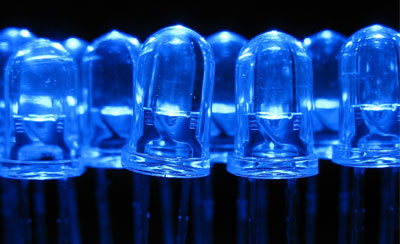Could Blue LED Light Keep Certain Foods Fresh without Additives?
The recent controversies over food additives have made it more and more apparent that a revolution in food manufacturing and food preservation is long overdue. While many are turning to locally grown or more expensive organic products, scientists in Singapore are working on a possible solution from a different but extremely promising angle.
LED light in certain color wavelengths has shown to be very effective at reducing or eliminating bacteria and even super viruses like C. diff and MRSA. Now scientists have found that blue LEDs have a strong antibacterial effect on a number of major foodborne pathogens. In fact, it works best in cold environments kept to around 4 to 15 degrees Celsius and mildly acidic conditions (around pH 4.5).
It means that very soon, the increasing demand for foods that do not need additives, chemicals and artificial preservatives will be met. During the study, they tested blue LEDs against a number of the well-known food bacteria like E. coli, L. monocytogenes, and S. typhimurium and found blue LED light was very effective at deactivating them. From these results, Professor Yuk Hyun-Gyun believes that acidic foods like fresh cut fruits and ready to eat fish and meat would be the easiest kinds of foods to use with the blue LED preservation techniques.
This data is the first of its kind as previous studies did not closely focus on environments that would be conducive to food preservation and storage. While this information is fairly new, there are further plans to start integrating real food samples to investigate whether LED illumination could kill the bacteria without the deterioration of the food products.
If blue LED should become the new standard in food preservation and storage, the necessity for accurate LED measurement instruments will increase dramatically. Konica Minolta offers a number of solutions cabable of precicely measuring the narrow band profile of a monochrome LED as well as infrared and ultravioled light sources. For portable measurements in the visable specrum the CL-500A Illuminace spectrophotometer would be a perfect choice, and for measurements outside the visabel spectrum our Instrument Systems line of Spectrometers coupled with an Illuminace probe would be more than adequate.











